Abstract
The current article presents a basic functional-analytic interpretation of metaphor. This work involves an extension of Skinner's (1957) interpretation of metaphor using relational frame theory (RFT). A basic RFT interpretation of a particular metaphor is outlined, according to which the metaphor acquires its psychological effects when formal stimulus dimensions are contacted via the derivation of arbitrary stimulus relations. This interpretation sees the metaphor as involving four elements: (a) establishing two separate equivalence relations, (b) deriving an equivalence relation between these relations, (c) discriminating a formal relation via this equivalence-equivalence relation, and (d) a transformation of functions on the basis of the formal relation discriminated in the third element. In the second half of the paper, a number of important issues with regard to the RFT interpretation of metaphor are addressed.
Keywords: metaphor, relational frame theory, equivalence-equivalence, transformation of functions, nonarbitrary relations
Full text
PDF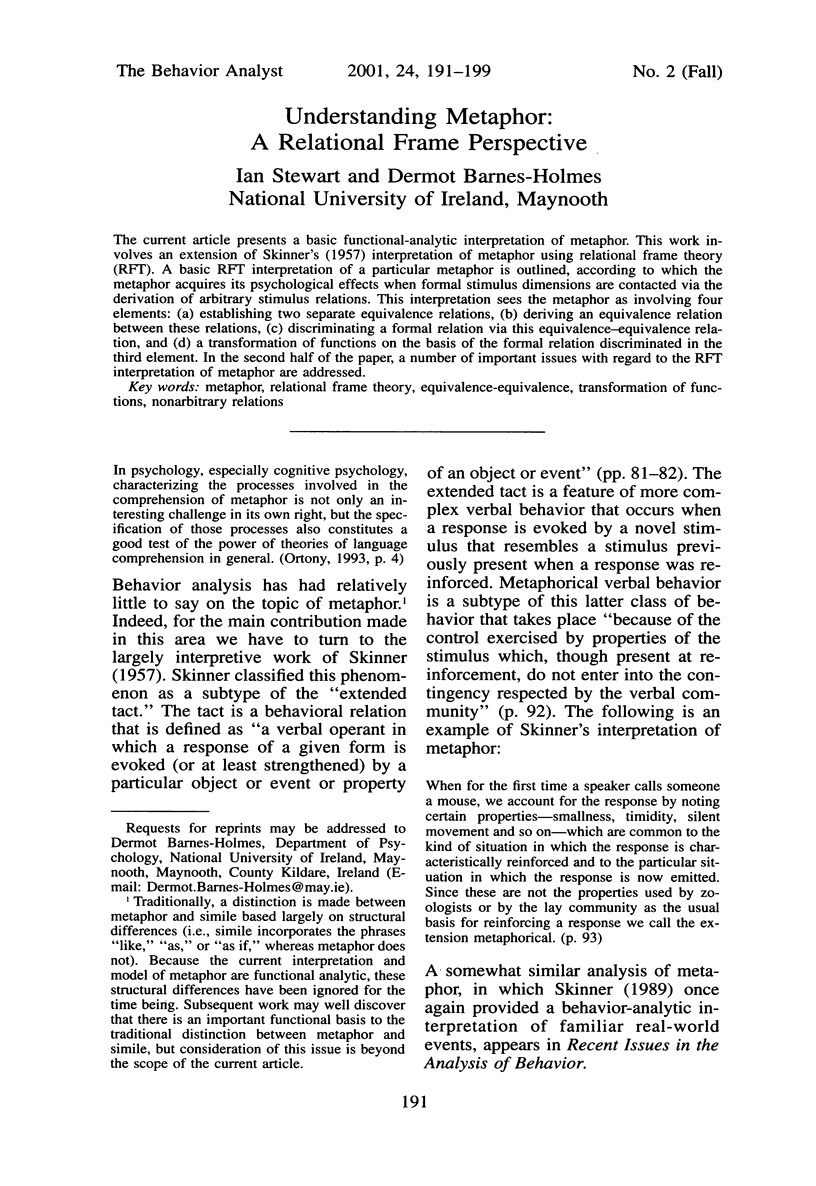
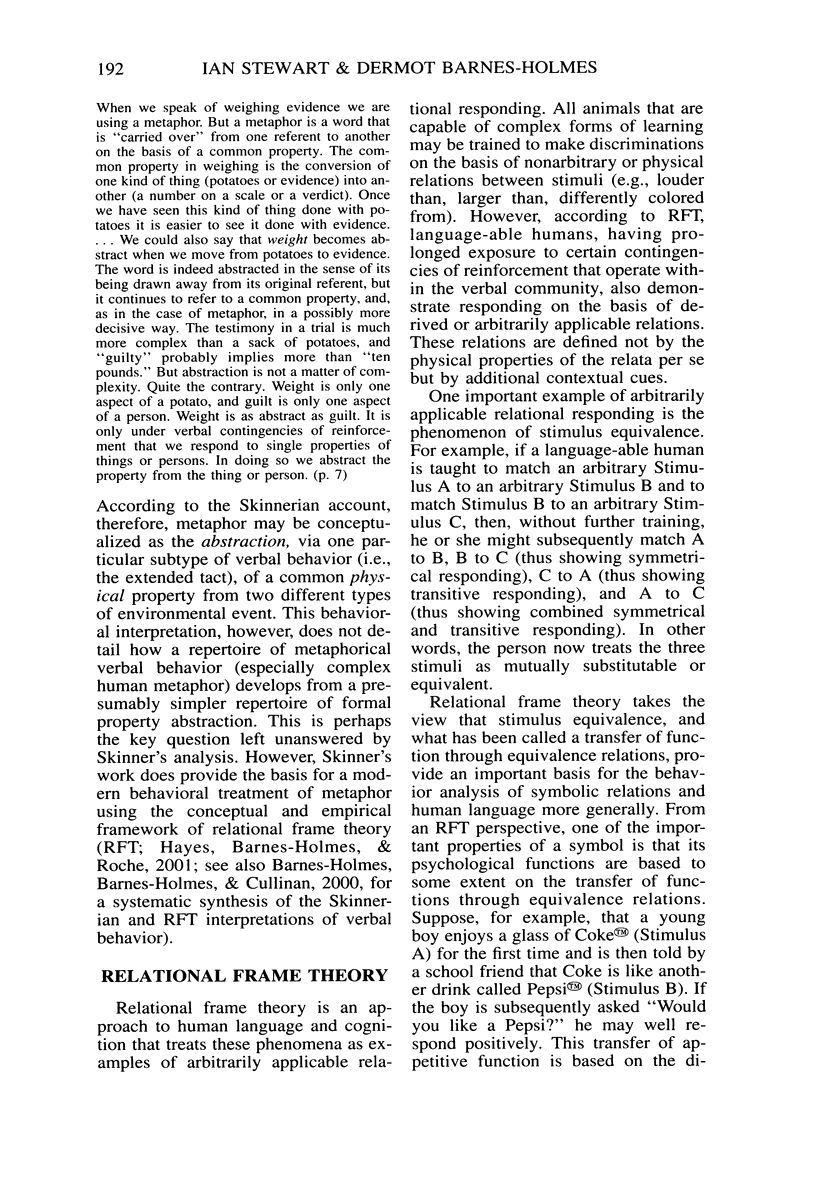
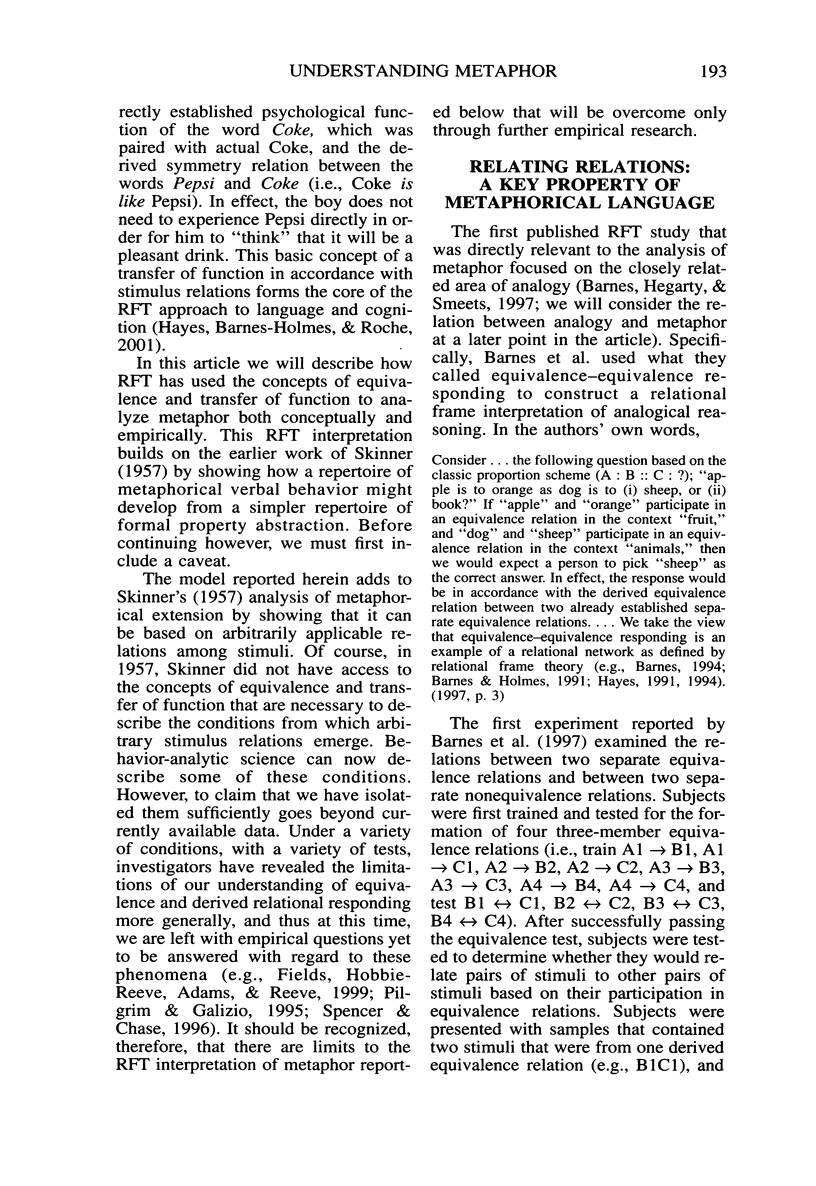
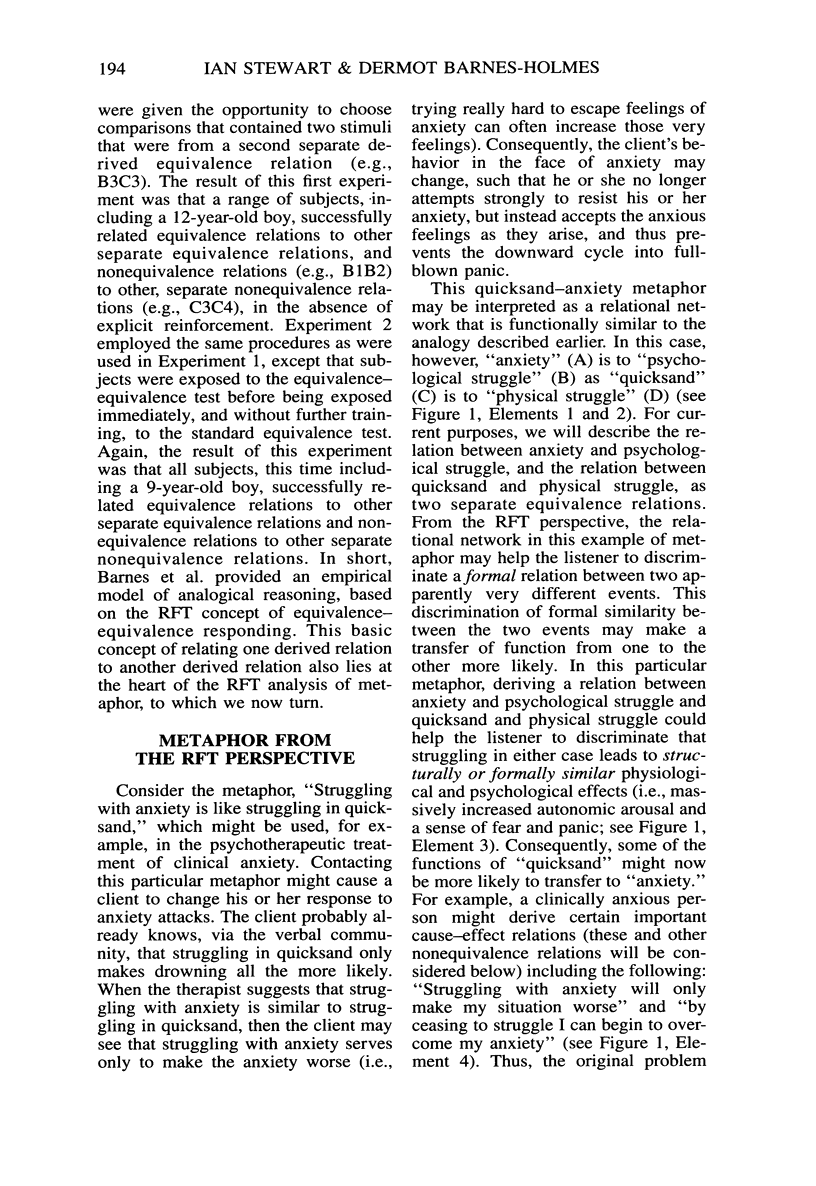
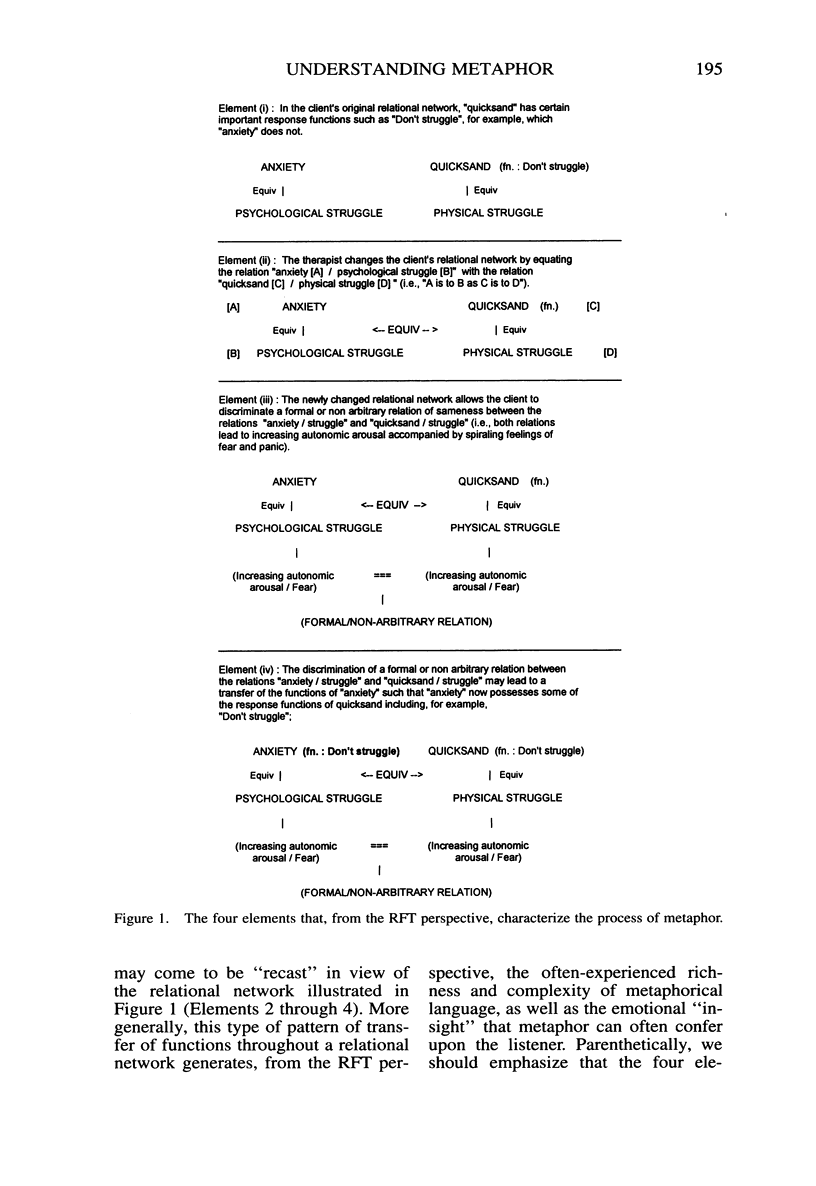
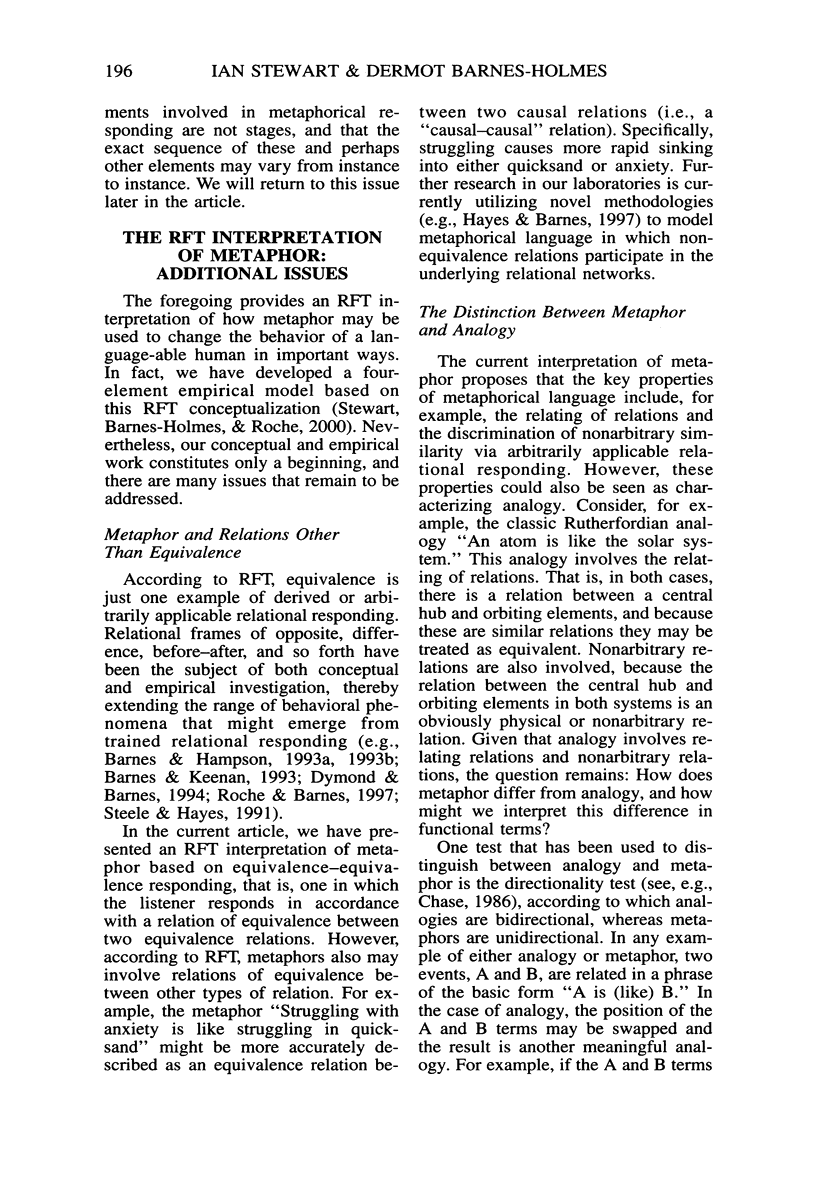
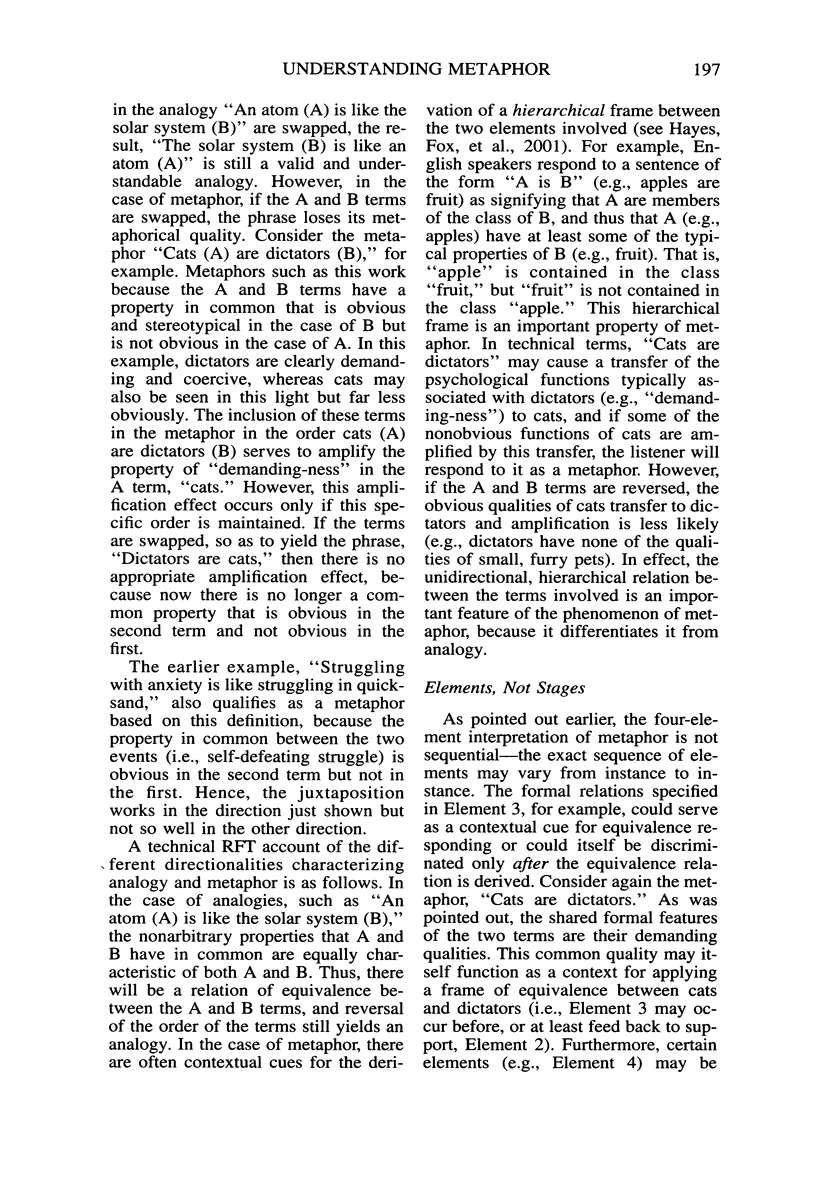
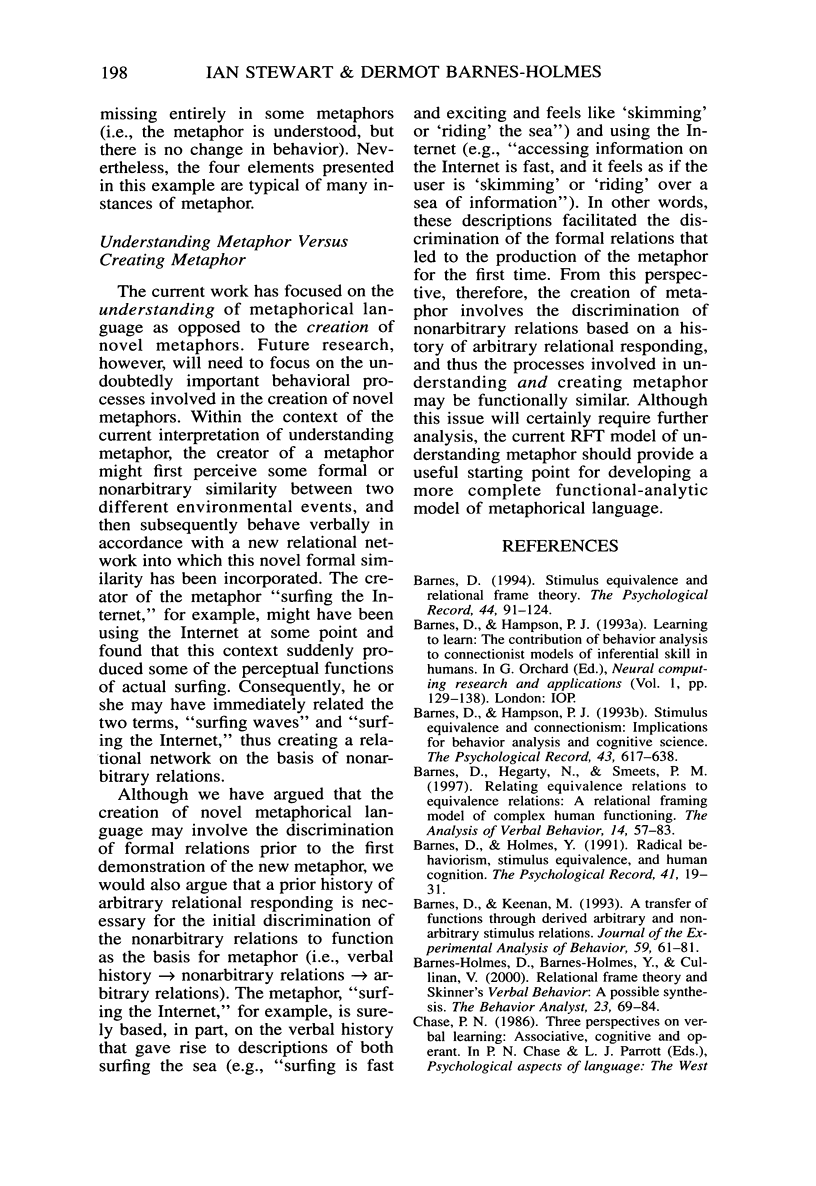
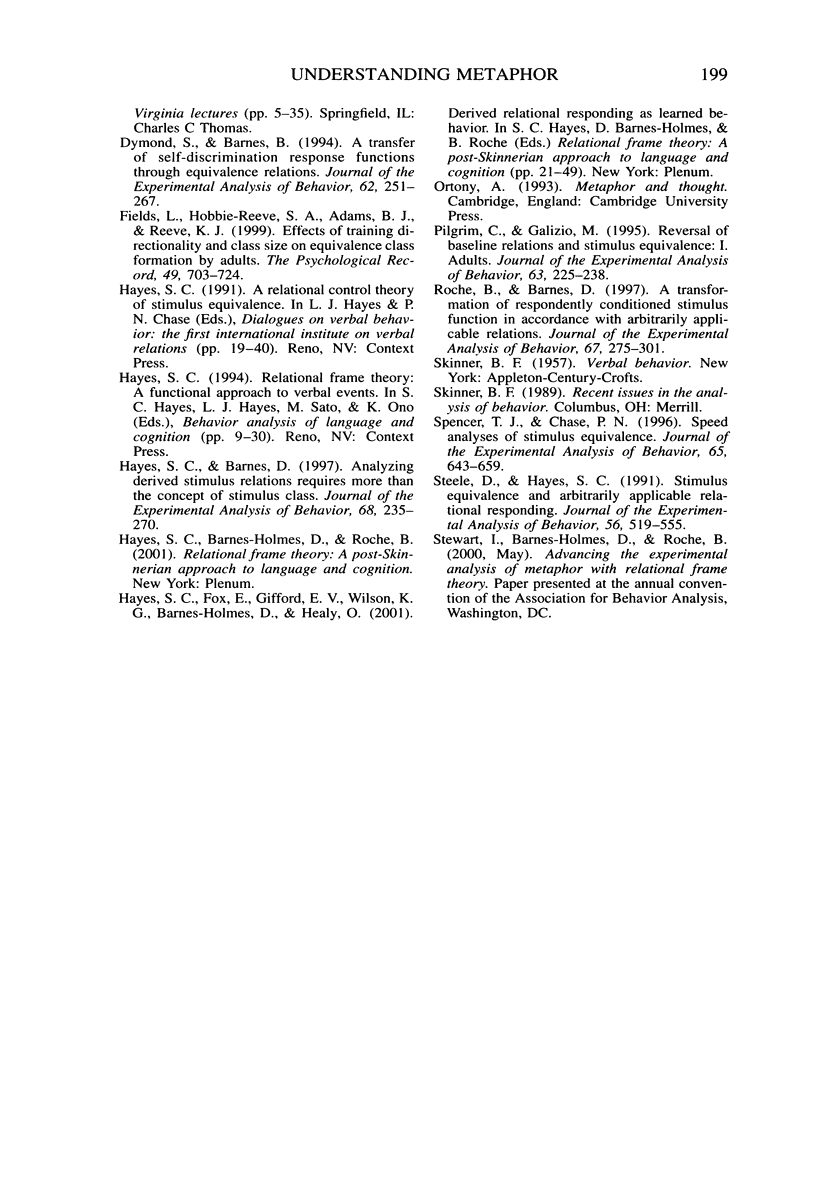
Selected References
These references are in PubMed. This may not be the complete list of references from this article.
- Barnes-Holmes D., Barnes-Holmes Y., Cullinan V. Relational frame theory and Skinner's Verbal Behavior: A possible synthesis. Behav Anal. 2000 Spring;23(1):69–84. doi: 10.1007/BF03392000. [DOI] [PMC free article] [PubMed] [Google Scholar]
- Barnes D., Keenan M. A transfer of functions through derived arbitrary and nonarbitrary stimulus relations. J Exp Anal Behav. 1993 Jan;59(1):61–81. doi: 10.1901/jeab.1993.59-61. [DOI] [PMC free article] [PubMed] [Google Scholar]
- Dymond S., Barnes D. A transfer of self-discrimination response functions through equivalence relations. J Exp Anal Behav. 1994 Sep;62(2):251–267. doi: 10.1901/jeab.1994.62-251. [DOI] [PMC free article] [PubMed] [Google Scholar]
- Hayes S., Barnes D. Analyzing derived stimulus relations requires more than the concept of stimulus class. J Exp Anal Behav. 1997 Sep;68(2):235–244. doi: 10.1901/jeab.1997.68-235. [DOI] [PMC free article] [PubMed] [Google Scholar]
- Pilgrim C., Galizio M. Reversal of baseline relations and stimulus equivalence: I. Adults. J Exp Anal Behav. 1995 May;63(3):225–238. doi: 10.1901/jeab.1995.63-225. [DOI] [PMC free article] [PubMed] [Google Scholar]
- Roche B., Barnes D. A transformation of respondently conditioned stimulus function in accordance with arbitrarily applicable relations. J Exp Anal Behav. 1997 May;67(3):275–301. doi: 10.1901/jeab.1997.67-275. [DOI] [PMC free article] [PubMed] [Google Scholar]
- Spencer T. J., Chase P. N. Speed analyses of stimulus equivalence. J Exp Anal Behav. 1996 May;65(3):643–659. doi: 10.1901/jeab.1996.65-643. [DOI] [PMC free article] [PubMed] [Google Scholar]
- Steele D., Hayes S. C. Stimulus equivalence and arbitrarily applicable relational responding. J Exp Anal Behav. 1991 Nov;56(3):519–555. doi: 10.1901/jeab.1991.56-519. [DOI] [PMC free article] [PubMed] [Google Scholar]


